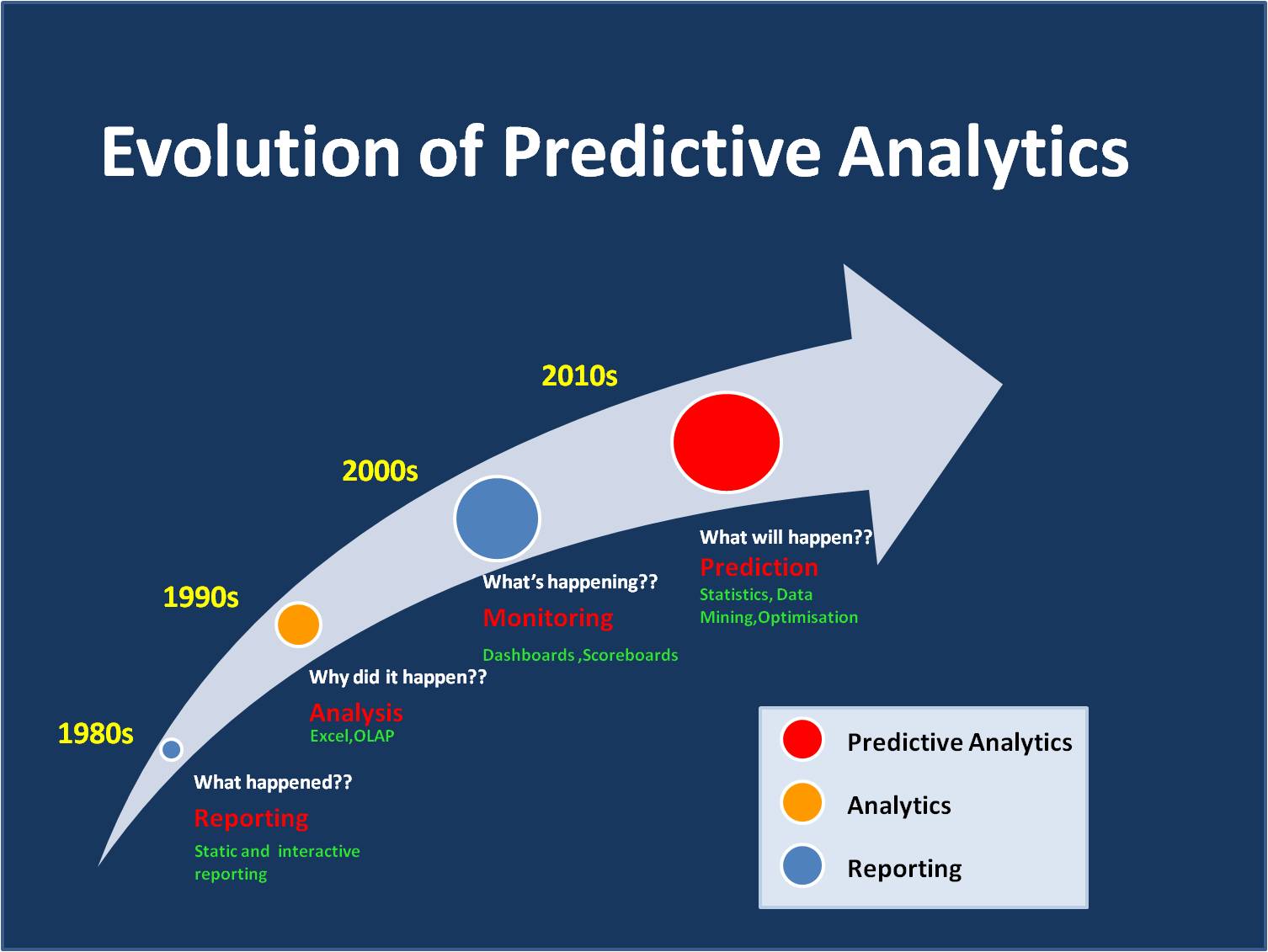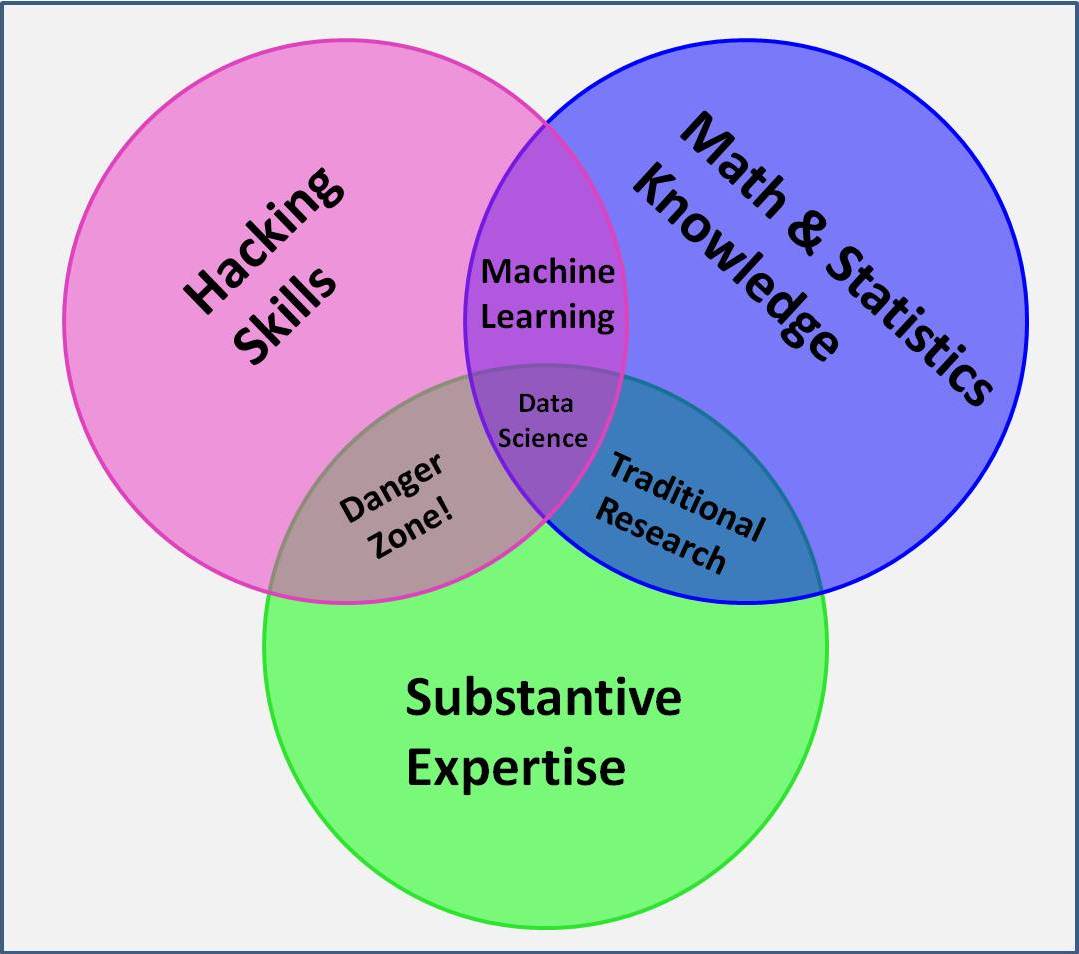


Predictive AnalyticsDo you think you have a mind to think? Do you think you can bring radical changes to the existing pattern? Do you want to be a part of this changing world and use your knowledge in Predictive Analytics?? The IT wave changed the whole world 25 years back. Now Predictive Analytics will reshape the future again. The flow has already begun, the world will be statistical and all the business decisions will take place basing on statistical models. Business organizations need to know more about the future, and in particular, about future trends, patterns, and customer behavior in order to understand the market better. So are you ready for a date with data? Analytics is booming everywhere in general and Bangalore in particular. Experts say around 35,000 analytics-related jobs would be generated in India in 2014, with Bangalore alone generating 12,000 jobs. According to experts, the overall analytics-related employment generated in India will be about 35,000 in 2014.In Bangalore, the figure is expected to hover around 12,000 jobs, while in Delhi NCR, it will be about 10,000. What is Predictive Analytics?Predictive analytics are used to determine the probable future outcome of an event or the likelihood of a situation occurring. It is the branch of data mining concerned with the prediction of future probabilities and trends. Predictive analytics is used to automatically analyze large amounts of data with different variables; it includes clustering, decision trees, market basket analysis, regression modeling, neural nets, genetic algorithms, text mining, hypothesis testing, decision analytics, and more. Predictive analytics combine business knowledge and statistical analytical techniques to apply with business data to achieve insights. These insights help organizations understand how people behave as customers, buyers, sellers, distributors etc. Everyone is in a rush and wants to contribute in this field. Are you one of them? If yes, then please spend more time knowing the main requirements if you want to be a part of this happening world. Although tools knowledge like R Language, Matlab, esProc, SAS, SPSS, Excel, and SQL is necessary but sound knowledge of one or more of the tools is not sufficient. The more important requirement is the in-depth knowledge of Statistical techniques which will be used extensively in this field. Please check the danger zone before proceeding further. Please look at the Conway’s diagram below: 
So if you join as a SAS programmer then you are not into this field. Either you have sound knowledge of Mathematics, Statistics or you need to develop now otherwise it will be too late! Mathematics (Other Than Statistics) On the math side, you need a basic foundation in linear algebra and calculus. You need to be able to understand how people approach and solve optimization problems. You need to understand what vectors and matrices are. Basic undergraduate courses typically cover calculus and linear algebra. They’re important to know, but they don’t go far enough for big data applications. Once you have those “basics” under your belt, it’s time to dig into matrix computation. “Most data mining applications use matrix computations as their fundamental algorithms, so a strong understanding of them is essential.” Statistics Once you have this foundation, you can turn to probability and statistics. A basic statistical tool is linear regression, which basically involves fitting a straight line so that it matches the data as closely as possible. There are a number of other statistical tools that can be viewed as generalizations of linear regression. Logistic regression, generalized linear models, and so on. It is also helpful to have a basic understanding of probability distributions (normal distribution, Poisson, exponential, etc) Generally speaking, running a statistical model using software is not that difficult. The hard part is interpreting the output and figuring out which models should be run and which is best. This requires experience and judgment, but it also requires a solid foundation in the basics. Another hard part of the predictive analytics process is pre-modeling -- that is, in accumulating and organizing and cleaning the data that is eventually modeled. This is a practical skill that is generally best learned "on the job" with real projects. Wherever you go in this field, you need to have a solid grounding in statistics. A verifiable background in statistical analysis is a prerequisite for most data science jobs. |
|
First batch for the classroom training in Bangalore starts from 15th Jan 2018. Please contact us for further details! 
|
For school level math training please visit
www.12math.comCopyright © 2013 - All Rights Reserved - Smears Education Solutions LLP
Designed and Maintained - I-Dream Solution
Disclaimer : The information contained in this website is for general information purposes only. We have no association with any Actuarial Society including IAI or IFOA and we don’t represent any Organisation. We support, help and guide students to get success in Actuarial Exams. This is completely a support centre. We use our own teaching methods for the purpose.